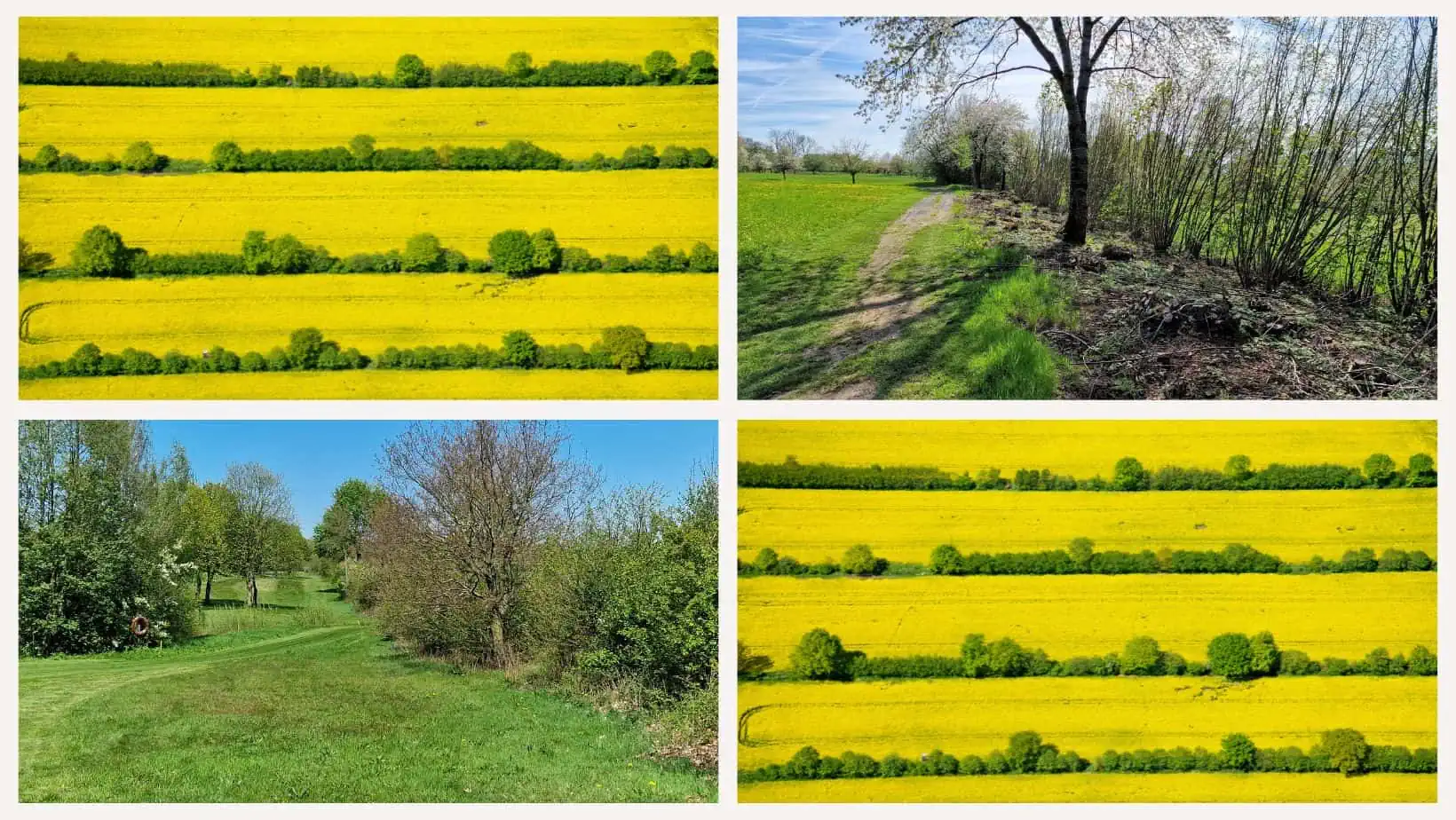Kink maintenance is landscape maintenance
Blooming sloes, hawthorns and elderberries – in spring and summer life is raging in the bushes that separate a small road from the golf course Escheburg on the other side of the fairways. The shrubs are part of a curb – and curbs are everywhere you look on the golf courses of Schleswig-Holstein. If you look for a major difference between Germany’s northernmost golf association and all the others, you automatically arrive at the kinks.
Around 45,000 kilometers of curtilage can be found in Schleswig-Holstein. In the majority, they were created a good 200 years ago in the course of the division of parcels. At that time, the usual practice was to bend and intertwine the planted shrubs and woody plants, which in this way created a fence substitute that was impenetrable to grazing animals.
Kinks are maintained on the golf course
On almost every golf course in Schleswig-Holstein, so-called kink maintenance is now part of the standard program. At regular intervals, the bends must be put on the stick, that is, strongly cut off. Large amounts of woody debris are created when either greenkeepers, volunteer golfers, or even professional companies professionally trim the bends. At the Mittelholstein Golf Club the wood is now chipped and spread under tree areas. This is good for the soil and saves transportation to another disposal site.
7000 species as inventory
Kink maintenance means species protection
In this way, golf courses make a significant contribution to species conservation in the north. Kinks are considered to be particularly rich in species and diverse. The Biological Atlas of Schleswig-Holstein estimates the species inventory of curtilages at about 7000 species, with about 1600 to 1800 species per kilometre of curtilage. Most of them are insects. However, they also include numerous small animals that use kinks as refuges. This is true for partridges, wild rabbits, hedgehogs and mice, but also for numerous bird species such as white throats, blackbirds, chaffinches or red-backed shrikes, which like to nest here.
Golf courses benefit in several ways from the curtilages that surround their properties: On the one hand, the Knicks are a medium for increasing biodiversity, but on the other hand, they also provide the often visual separation of fairways and, in addition to visual protection, a safety barrier for balls flying through. In addition, curtilages usually have a very positive effect on the microclimate because they act as windbreaks and thus also prevent soils from drying out.
Knick care helps the ecobalance
Ultimately, however, the elaborate maintenance of kinks is also an aspect that usually benefits golf courses in their dealings with nature conservation authorities. Ecopoints, which have a positive impact on the eco-balance of golf courses, are also spent on constant kink maintenance. In Escheburg, the club with the most Knicks in the whole of Germany, one can then also fall back on this same ecological balance sheet if one wants to realize other new projects, for which one also needs a permit from the Lower Nature Conservation Authority. For Gunther Hardt, head of the biodiversity working group at the German Golf Association, “Knicks are therefore super”. Kink maintenance means landscape management on the golf course, he sums up. Given that there are currently 63 golf courses in Schleswig-Holstein, their contribution should not be underestimated.







